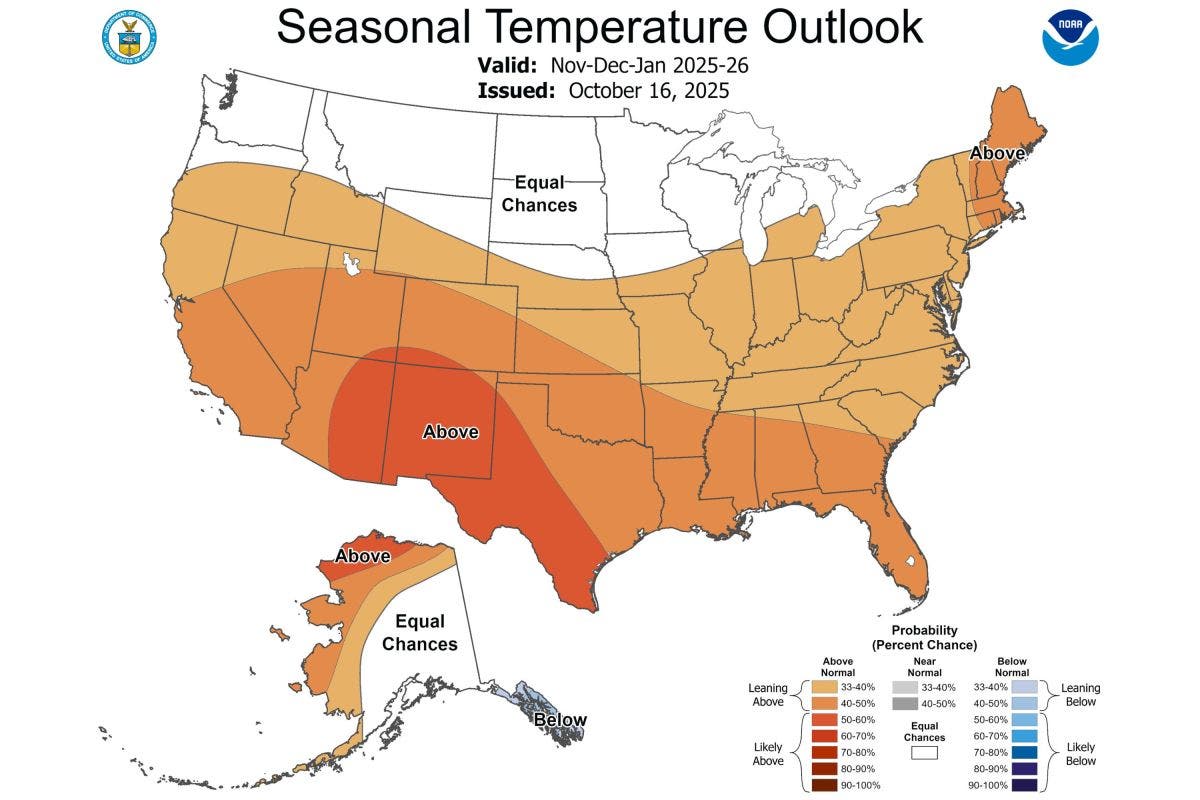UPDATE: The Climate Prediction Center (CPC) has just released its latest winter weather forecast, revealing significant impacts from La Niña that will affect the U.S. from November 2025 to January 2026. This urgent update highlights how states should prepare for potentially extreme weather conditions.
La Niña conditions have been officially detected and are anticipated to persist through the winter season. While expected to be weak, the National Weather Service (NWS) warns that even a minor event can lead to notable shifts in temperature and precipitation patterns.
According to the CPC’s outlook, areas including parts of southern Texas, the majority of New Mexico, and roughly the eastern half of Arizona are most likely to experience above-average temperatures this winter. Additionally, southeastern Utah and parts of southwestern Colorado are also included in this forecast.
Despite these warmer predictions, numerous states—particularly in the upper Midwest—face uncertain weather outcomes. States such as Wisconsin, Minnesota, North Dakota, South Dakota, Montana, and Washington are forecast to have equal chances of above- or below-normal temperatures.
In terms of precipitation, the forecast indicates that Washington, Oregon, and parts of Idaho and Montana are most likely to see above-average precipitation. Conversely, states in the south, southwest, and southeast regions are expected to face drier-than-normal conditions this winter.
Jon Gottschalck, chief of the CPC Operational Prediction Branch, emphasized the importance of La Niña in shaping this winter’s forecast. He stated, “Although La Niña is currently favored to be in the weak category, we still factored it into our temperature and precipitation outlooks. Weak events in the past have resulted in substantial temperature and precipitation impacts.”
As meteorological winter begins on December 1 and lasts through the end of February, residents are urged to stay informed. Local forecast updates will be provided by regional NWS branches on their websites and social media channels.
With winter approaching, communities must prepare for the possibility of extreme weather changes driven by La Niña. Stay tuned for further updates as the situation develops.
